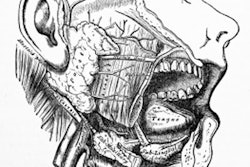
Thanks in part to a series of high-profile lawsuits, bisphosphonate-related osteonecrosis of the jaw (BRONJ) has gained attention as a rare but serious side effect of widely used bisphosphonate medications such as Fosamax and Zometa.
Hundreds of multimillion dollar lawsuits pending in the U.S. claim that the manufacturers of these drugs failed to issue adequate warning of this side effect has pushed BRONJ into the limelight.
The situation is further complicated by the fact that the management of BRONJ is difficult and problematic and in flux.
A new study by researchers from New York University College of Dentistry to be presented at the upcoming International Association for Dental Research (IADR) conference in San Diego examined the success rate of treating BRONJ according to the most recently updated guidelines issued by the American Association of Oral and Maxillofacial Surgeons (AAOMS).
With the growing use of bisphosphonates to treat patients with conditions such as osteopenia, osteoporosis, Paget's disease, and various malignancies that have metastasized to the bone, an increasing number of BRONJ cases have been reported in the literature, the study authors noted.
The AAOMS position paper on BRONJ currently advises a symptomatic treatment when caring for this disease and recommends that any surgery be deferred as long as possible.
The IADR study authors conducted a literature review and retrieved articles published in English between 2003 and July 2010 involving cases that followed the AAOMS guidelines. They found that 28% of the cases that had completed healing of BRONJ using the AAOMS guidelines were successful.
"Evidence from the literature emphasizes that a conservative treatment is supported when the disease presents at an early stage; a more surgical approach is supported at a later stage in the disease, or in the event of a refractory case," the authors concluded. "However, since there is still no accepted standard for the treatment of BRONJ, these patients could benefit from further research to identify additional therapeutic strategies."
Niall McLeod of the department of oral and maxillofacial surgery at Queen Alexandra Hospital, who has also done research (Surgeon, February 2009, Vol. 7:1, pp. 18-23) on this topic, questioned the study findings.
"The only thing they appear to have done is group patients from previous case reports together," he noted. "As the methods and reporting of studies in the literature is generally variable, methodologically this isn't particularly helpful."
The guidelines from AAOMS should form the basis of dental practice when treating patients suffering from this condition, he concluded.
Copyright © 2010 DrBicuspid.com



















